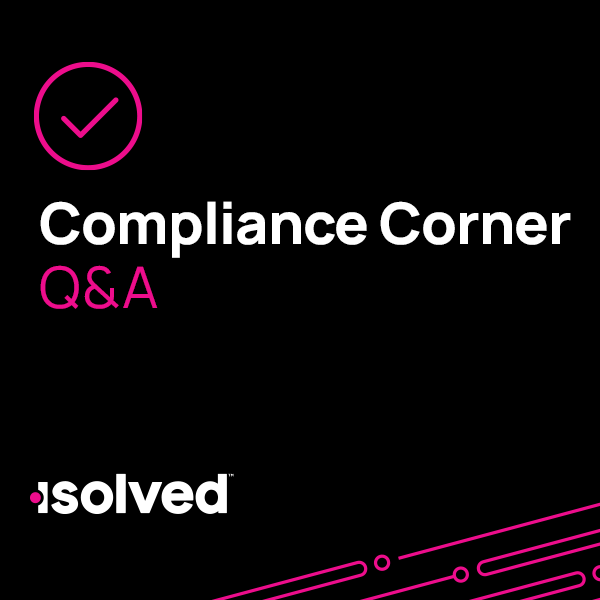September Compliance Corner: The Exposed Culture of Engagement and Motivation
Monday September 25th, 2023
Estimated time to read: 4 minutes

As we look across the work environment we see empty cubicles, dim lights, empty parking lots, and quiet space. The last several years, the pandemic, the office environment, culture and workforce, made significant changes to the type of employee, workspace and culture of many companies. Even before March 2020 companies allowed remote working by adapting to engage and motivate those employees. But what about the employers who chose not to adapt? Will management go back to the old school way? Are they afraid? Do they ask how do we keep and attract talent? How do we keep them engaged? Motivated? Do we have a forward-thinking plan?
In March 2020 employers sent their employees home with their laptops and mobile devices, quickly discovering that business continuity happened from a remote space. Employees no longer had commutes, could save on parking and transportation, increased time with their families, and created a better work- home life balance. Technology is no longer an issue. Internet access exists almost anywhere within the United States.
Employees figured out how to work from anywhere. However, employers wondered what to do about keeping the employees engaged and motivated to maintain productivity and profitability for the business. They began to wonder if their employees were truly engaged and motivated when they come to an office. Did it matter that there was no chance for gossiping, talking about the weekend or where everyone was going to lunch?
Technology and Skills
Innovative technology for Teams, Zoom, Cloud Access, and Expectations helped. Since employees adapted and learned these new systems, employees’ work home life structure evolved and balanced, which often created a better employee. However, did employers create too many restrictions because they did not see them physically working in an office?
Many of these technologies existed prior to the pandemic. Training and adapting to these new skills were learned quickly and effectively. Businesses always talk about training and developing their workforce, but did the pandemic expose the lack of continued training and skill development for a productive workforce? The least useful employees figured out years ago to look busy without being productive. The concern of employees staying connected, creative, and collaborative is more evident in the workforce today than in the past. The adaptation of technology and software connections grew larger and broader within the business. Meeting via Teams or Zoom can feel like they are sitting in the conference room or a physical joint workspace. With these newfound skills and freedom, an employer may ask do employees feel like they are on an island, wondering if no one cares?
The struggle before March 2020
Issues and problems existed when everyone was in an office building because management and business practices were never perfect regardless of what space employees called “the Office.” Management and performance issues existed before the world went remote and many companies embraced the changed workforce. The companies that struggle have this ongoing challenge as they ignored an environment of unengaged or unmotivated workforce which created quiet quitting. Remote environments exploited these issues more or did management not know how or wasn’t willing to adapt?
So, What is Management to Do?
So, what can managers and businesses do to keep their workforce engaged and motivated? Planned meetings with a purpose, where expectations are communicated is the answer. No longer do we need to have a meeting to plan a meeting or do we need to be seen in a conference room to feel important. Team collaboration is easier today than it ever has been. We no longer hear “sorry I can’t make that time as I have to leave to be home by X time.” Today we can have a meeting in almost any place by being online and available in just a few keystrokes on a mobile device or laptop while still maintaining the work/life balance.
Simple Tactics with Purpose
To confirm if our employees are working can be simple; regular communication and outlined expectations and goals. Regular check-ins with our staff. Some managers do daily check-ins or at least weekly check-ins. The check-ins are not just to check up on them if they are working but also to check their mental status. Accessibility is easier than ever due to software and technology options, even if the manager or employee is not available at that exact time. Creative thoughts or questions can be typed out and pended for answering at a time that the manager or employee can refer to the stream or thought when they have the dedicated time.
Collaboration is easier even across time zones where employees in two or multiple time zones can meet and discuss. Employee leadership skills are revealed when there are 1 or 2 who keep the activity or creative juices flowing. A comradery sense of respect and gratitude can still exist through managers by simply doing creative and regular virtual activities like donuts and coffee, or afternoon break where no work is discussed. Playing creative games that develop problem solving skills help grow people skills and enhance a sense of belonging and are the latest virtual ideas of ways to stay connected. Purpose-driven communication and interaction with employees from managers develops trust and respect and this eliminates the process of a meeting to have a meeting. In a less formal comfortable environment the team learns more about each other than they may in an office.
Engaged and Motivated Culture
Engagement and motivation of the workforce is not just a remote working employee issue but rather an overall business culture and environment issue. The culture of the business and the development of thriving employees start with the relationship. Satellite, regional or headquarter office is not necessary as today’s workforce has developed and learned to adapt to their environment. Being a mobile and technology advanced workforce employees are just a phone call or instant message away. Poorly executed plans and policies are what create an environment that makes employees leave.
Meetings without a purpose or goals are a communication and performance issue. The competitive workforce demands that employers provide a work life balance. An employee’s commitment to the company and going beyond is what the employer is looking for with the workforce. This can happen when intentional communication creates trust and respect within the workforce thus retaining high quality employees.
Want to make the most of your remote workforce? Discover how isolved HR Services can help.
About Brad Harshaw:

Brad Harshaw is an HR Business Partner on the isolved HR Services team, with over 30 years of Human Resources experience. His expertise is employee relations, organizational behavioral development, and compliance in the small to mid-market. In addition, Brad has been a former business owner of a Human Resource Outsourcing firm for the past 18 years.
